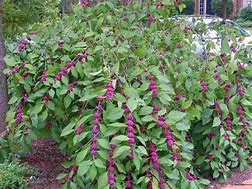Many people view native gardens as very natural or even wild landscapes with a haphazard mixture of plants and grasses; however, this does not have to be the case. Plants that are native to a landscape range from trees to groundcover. They include shrubs, perennials, annuals, and water plants that will thrive in their native habitat. These plants can be used as hedges, specimen plants, or border plants. The formal landscaping of a traditional garden can be obtained using native plants. By observing the native landscape and researching plants, gardens can be designed that are beautiful, interesting, water conserving, and maintenance friendly.

An article in Greenacres entitled “A Source Book on Natural Landscaping for Public Officials” showcases many of the benefits of natural landscaping of public areas. (https://archive.epa.gov/greenacres/web/html/chap2.html) This study was done on large areas in Illinois; however, the benefits stated there can also pertain to Texas and smaller projects. The Greenacres report stated that they, “approximated 9/10 of the cost of conventional landscape maintenance is avoided.” A bed landscaped with native plants saves in the initial installation as well as maintenance.
When landscaping, several factors influence the plants used. The amount of sun or water as well as the type of soil and the “lay of the land” are some of the things that need to be observed. Plants are often identified as sun or shade loving. In addition, wet or dry areas of the garden will need plants for the moisture level of the soil. Most garden soil is clay (gumbo), loam, or sand. The structure of the soil can be changed with amendments, but choosing plants that grow best in the soil available saves time and money. The “lay of the land” can determine mini-climates in the garden. An area next to a brick wall will be warmer than an area in the shade. An open area will have more wind than a sheltered area. The best way to determine these influences is by observation throughout the year.
Once these factors are determined, it is time to start choosing the native plants. Starting from the top, which is called the canopy, can be the most efficient way to start a garden. Working with trees in the landscape or adding trees should be first. Small ornamental trees such as Roughleaf Dogwood, Mexican Plum, Redbud, Yaupon Holly and Possumhaw Holly are usually under 20 feet tall. Some of them can be used like shrubs instead of trees. Conifers such as Ashe Juniper, Short-leaf or Long-leaf Pine, or Eastern Red Cedar make good windbreaks and are evergreen. The Bald Cypress is a deciduous conifer. Fast-growing shade trees are Caddo Maple, River Birch, Hackberry, Texas Ash, Sweetgum, Cottonwood, and American Elm; however, these trees are not as long-lived as the slower growing Oaks, Pecan, and Hickories.
Next are the shrubs and vines which is called the understory. If a shrub is supposed to conceal an area, get one that is evergreen. Groundsel or Cenizo might be used as well as hollies which can also be classified as trees. If the shrub is supposed to add structural interest, a deciduous shrub with interesting growth habit such as Witch Hazel might be the one to plant. Using American Beautyberry for its attractive fruit or one of the Sumacs for their fall color adds interest to the landscape. Native vines include the Trumpet Vine, Coral Honeysuckle, Virginia Creeper, or Passionflower.
Once the trees, shrubs, and vines are in place, your groundcover can be added which consists of the perennials, annuals, ferns, or ornamental grasses. Perennials will come back every year; sometimes dying back for part of the year and re-emerging later. An annual’s life cycle is completed in one year. Ferns which do not produce flowers and grasses can be annual or perennial.
The last step in choosing plants is to research the attributes of the plants to find the right plant for the right place. The height and spacing of the plants, the water and soil needs, and other factors such as flowers and seeds can help determine one plant over another for a particular area. Some plants may be too tall or wide for an area such as a Pecan or Oak, or they may not be aesthetically pleasing such as a Hackberry. Some may produce flowers, seeds or leaves that can be a problem such as Magnolia, Cottonwood, or Sycamores.
So many choices are available that they cannot all be listed here. However, books such as Native Texas Plants by Sally Wasowski and Andy Wasowski and Landscaping with Native Plants of Texas and the Southwest by George O. Miller are good starting places for finding out about Texas native plants. Also, the Lady Bird Johnson Wildflower Center has an online database of native flowers at www.wildflower.org. The Native Plant Society of Texas (npsot.org) offers many resources to the gardener wanting to use native plants.
_________________________________________
Grayson County Master Gardeners Association is a non-profit 501(c)(3) organization sponsored by the Texas A&M AgriLife Extension Service. Reach us by email at mastergardeners@co.grayson.tx.us, by phone 903-813-4204, our web page txmg.org/grayson, or our Facebook group.